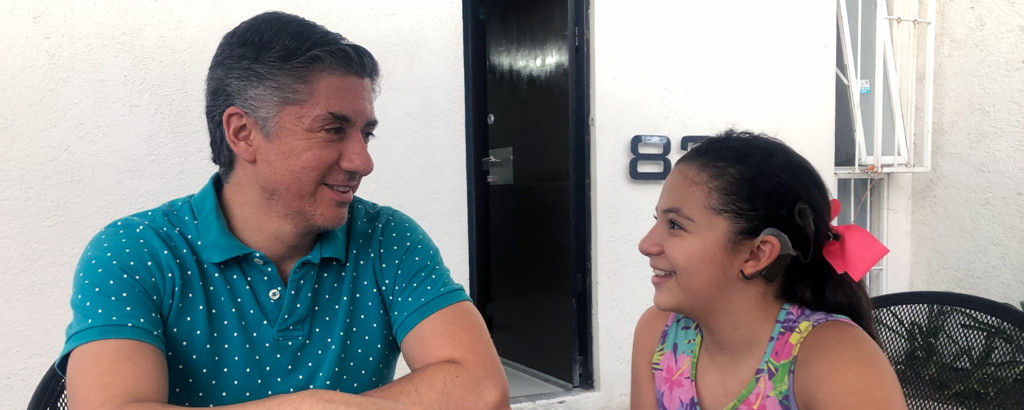Talking to someone while social distancing or wearing masks can be awkward and frustrating. Not only can masks muffle the sound of speech, they also make it harder to read facial expressions or emotions. And lipreading is quite out of the question!
How distance affects sound
Higher frequencies are important to clearly hear speech sounds like ‘sh’ ‘k’ ‘f’ ‘s’ ‘th’ and to understand speech in background noise. Of course, social distancing makes speech sound quieter because sound levels decrease with increasing distance. But there is more to it than just speaking more loudly.
Important factors for communication over a distance
Successful spoken communication relies on several factors – both visual and acoustic – and depends on both speaker and listener.
For the speaker, the acoustic factors include clear and accurate pronunciation of words, the vocal effort used when adjusting to an increase in the communication distance and whether you are facing the listener or turned away.
For the listener, the acoustic factors affecting success include use of hearing devices and assistive technology, distance from the speaker, level of background noise and possibly listening to a non-native accent or second language.
What to do when social distancing and wearing masks
Use clear speech, speak up and face the person. Ask the other person to do the same. Try to maintain eye contact.
Reduce background noise or move to a quieter location.
Wear your hearing devices! Also make sure your device is functioning well and batteries are fully charged before you leave home.
Make use of all technology. For example, if you use a Cochlear™ Nucleus® 7 or Cochlear Nucleus Kanso® 2 Sound Processor*, get to know features like SmartSound®iQ with SCAN and ForwardFocus**.
Consider using assistive listening accessories like a Cochlear™ Wireless Mini Microphone.
Tips for wearing a mask with your sound processor or hearing aid
Consider using one of Cochlear’s retention options, like the Snugfit or Safety Cord, to help keep the sound processor securely on your head.
Try a mask that has four string ties instead of ear loops, if the loops make wearing your device uncomfortable.
Remove your mask in a safe place, then check to make sure your device has not been dislodged.
If you misplace your sound processor, use the ‘Find My Processor’ feature for the Nucleus 7 and Kanso 2 sound processors. With the Nucleus Smart App***, you can locate the lost sound processor using the GPS functionality that tells you the last location the sound processor had contact with your compatible smartphone.
Could a speech-to-text app help?
A speech-to-text app translates speech into text in real time on your smartphone. They are not always 100% accurate, but they can help if you are struggling, for example somewhere public like a shop or a restaurant. We’ve listed some free and paid options below, in case you want to check them out. (Note: They all require WiFi or data network access.)
Google’s Live Transcribe and Live Transcribe for iOS
(different apps with similar names – one is for Android™ and the other for iOS)
Otter.ai (available for Android and iOS)
App My Ear (for iOS only)
Ava (available for iOS and Android)
The third-party apps listed above are not services provided by Cochlear Limited or its affiliates and may change without notice. Information accurate as at September 2020.
__________
*The Cochlear Nucleus 7 Sound Processor and Kanso 2 Sound Processor are compatible with Apple and Android devices. For compatibility information visit www.cochlear.com/compatibility
**ForwardFocus is a clinician-enabled, user-controlled feature.
***The Cochlear Nucleus Smart App is available on App Store and Google Play. For compatibility information visit www.cochlear.com/compatibility
Apple is a trademark of Apple Inc., registered in the U.S. and other countries. App Store is a service mark of Apple Inc., registered in the U.S. and other countries.
Android and Google are trademarks of Google LLC.




